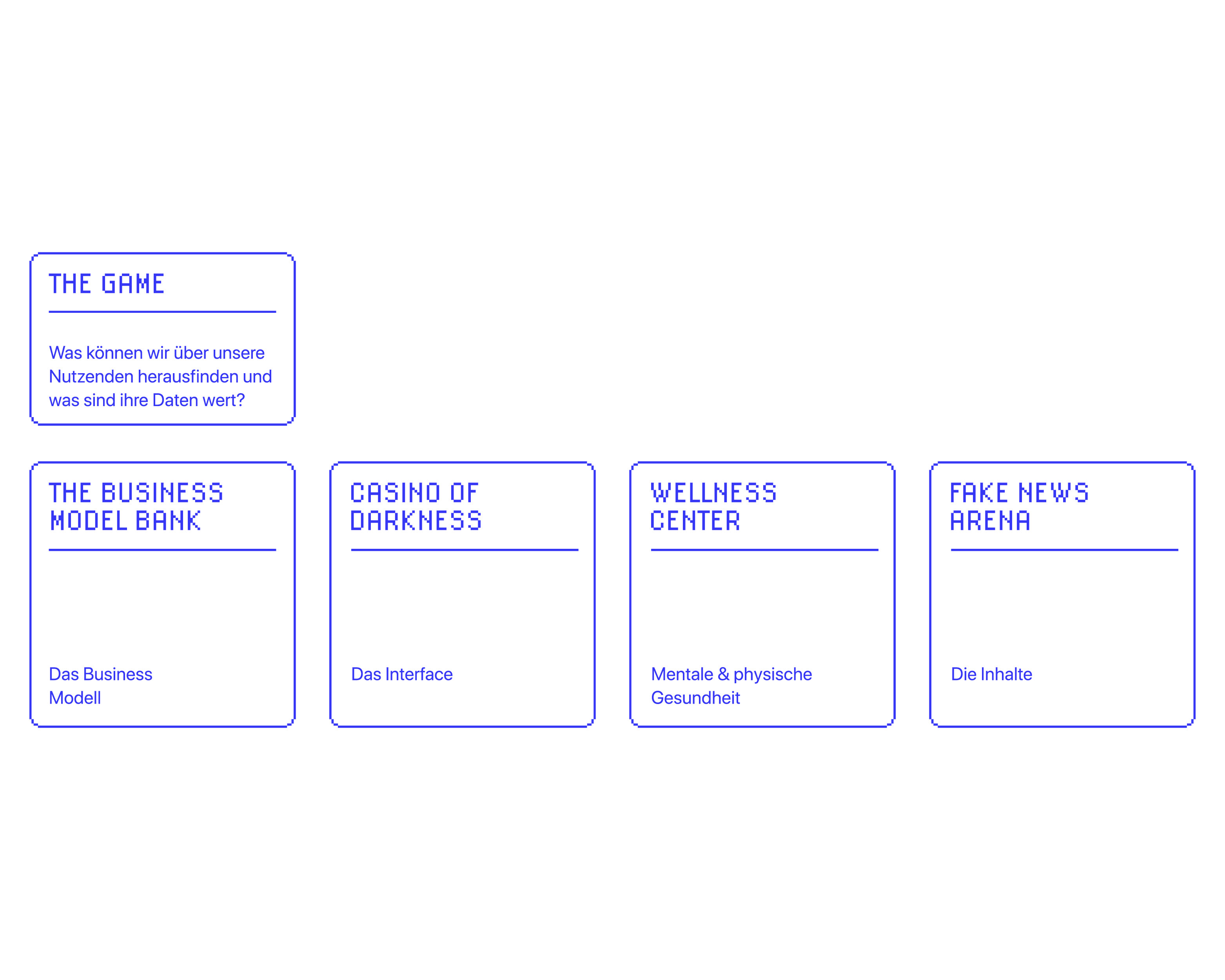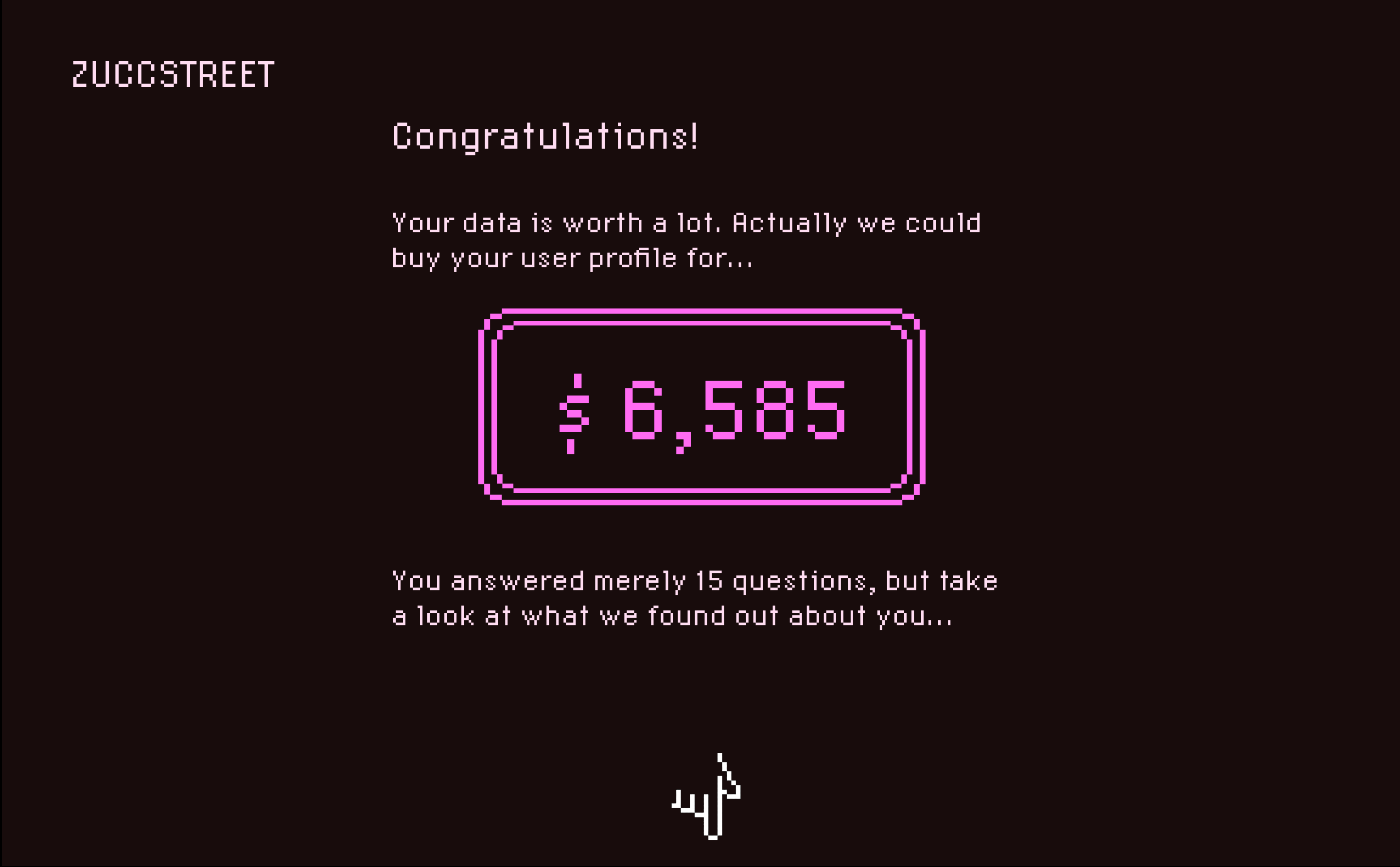Zuccstreet is an Interactive Experience that aims to provide a critical overview of social media. The experience aims to reveal the connection between the emergence of these platforms and thus the outcome of users online behavior through a tangible story to change users online behavior in the long term.

zuccstreet
how social media sucks you in
Why?
Social media has become an indispensable part of most users lives. As if remote-controlled, the thumb moves to the app icon of Instagram, Facebook, etc. It is already known that many users spend more time on social media than they would like. Since the iOS feature to keep track of screentime and set limits for certain applications, some people try to get a grip on their social media addiction, but usually fail.
What we tried
Getting users to change their social media behavior doesn't happen simply by telling them it's bad for them. It's better to give users a tangible understanding of where their boundaries should be.
For most social media users, it's probably unrealistic to stop using it altogether. However, they can monitor their behavior to see how their use affects them and how they should behave as a result.
Based on this insight, we have designed Zuccstreet, a digital exhibition or interactive communication system that provides a thorough overview of the aspects we have found and at the same time aims to make it possible to experience which problem areas arise from the use of social media. Our goal is both to educate about problem areas and at the same time to change user behavior in the long term.
Question Zero
How can we critically highlight various problem areas of social media while creating awareness that will influence users in the long run and change their behavior?
Problem areas

concept
In order to put our findings about problem areas into a meaningful context, we have developed an exhibition concept that assigns a room to each problem area. In these rooms, pure knowledge is conveyed on an informational level, and on a meta-level we try to make the respective problems tangible.

the game
Here we try to make the business model tangible. By answering just 15 questions, we are able to generate 98 data points that result in a detailed data profile of our users.

the website
The information level is introduced with a short explanation and our intention of the project. The user is then asked to select one of the "premises" that we had already defined in the concept.
The individual rooms deal with the respective problem of social media. Statistics, studies, quotes, videos, diagrams, and texts are used here to be able to convey the respective problem to the user.
In addition, individual content sections are marked with questions, which gives the entire information level a common thread. The individual questions build on each other and then end chronologically in the "fake news arena.

Facts
4 months long Project during the 6th Semester at HfG Schwäbisch Gmünd in the course "applied design" with Lisa Amann and Nikola John, supervised by Prof. Jens Döring and Prof. Hans Krämer.

